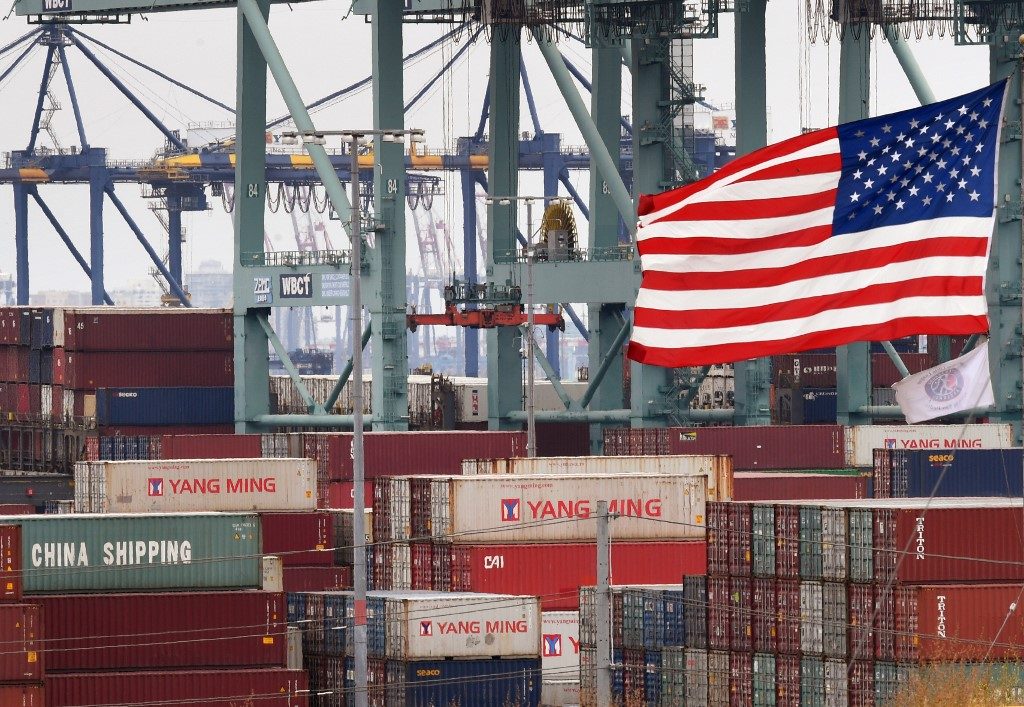SUMMARY
This is AI generated summarization, which may have errors. For context, always refer to the full article.

WASHINGTON, USA – A bump in United States exports helped shrink America’s yawning trade deficit in July while imports from China continued to fall amid the two nations’ trade war, government data showed Wednesday, September 4.
The relatively steady deficit comes as hopes dim for a near-term resolution to the US-China conflict, which has begun to rattle the American economy.
Economists said Wednesday the trade gap is likely to widen in the coming months as demand for US manufacturing exports weakens further, creating a drag on the economy.
The US trade gap in July narrowed by 2.7% to $54 billion, the largest drop in 5 months, as the United States exported more automobiles, medications, aircraft, and oil drilling equipment, the Commerce Department said.
Economists had been expecting an even bigger decline.
Imports from China, the prime target of President Donald Trump’s multi-pronged trade offensive launched last year, fell 1.9% to $39 billion, their lowest level since April.
Mexico and the European Union appear to have picked up some of the slack, as the US deficit with both markets continued to rise.
Overall, exports rose 0.6% to $207.4 billion – which still left them below last year’s level through July. Imports fell 0.1% to $261.4 billion.
Trump this week fired off stern warnings to Beijing and has planned successive waves of tariff increases through the end of the year covering the vast majority of Chinese imports into the US. Negotiations to resolve the conflict have yet to resume.
A ‘grim’ outlook
The deficit – which is the difference between what the United States exports and what it imports – has widened so far this year by more than 8%.
But Trump has long viewed deficits as a defeat for the United States, arguing that they amount to stealing. These assertions are rejected by most economists.
And, despite his efforts to cut the deficit, it has continued to rise during his presidency as a growing economy, hungry for goods and services, steadily increased imports.
Weak commodities prices hit US exports for the month, as the value of crude oil, coal, fuel oil, and other petroleum products fell.
Meanwhile, US services imports, such as tourism and software royalties, hit a record $49.6 billion, eating into an area where America normally enjoys a healthy surplus.
Wall Street was little moved by the numbers, with the Dow Jones Industrial Average up nearly 240 points shortly as traders rallied on positive signs in Hong Kong’s political turmoil.
Macroeconomic Advisors said the latest trade numbers shaved three-tenths of a percentage point off their 3rd quarter GDP estimate, which now stands at 2%.
Ian Shepherdson of Pantheon Macroeconomics said the July lull appeared to be the “calm before the storm.”
An August survey of US manufacturers showed export orders had fallen to a 10-year low, meaning “the next few months are likely to see a serious rollover in exports,” he said in a note to clients.
The hit to GDP growth in the 3rd quarter will likely be “modest,” he added, “but the outlook is grim.” (READ: U.S. sees ‘modest’ growth, businesses show ‘near-term’ optimism – Fed) – Rappler.com
Add a comment
How does this make you feel?





There are no comments yet. Add your comment to start the conversation.